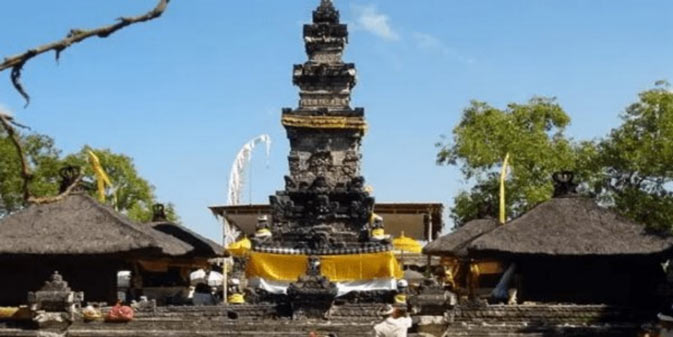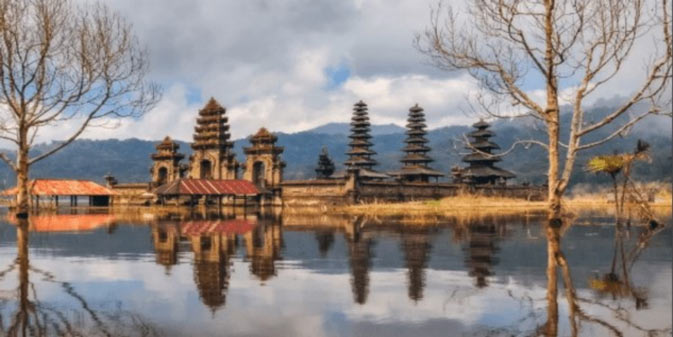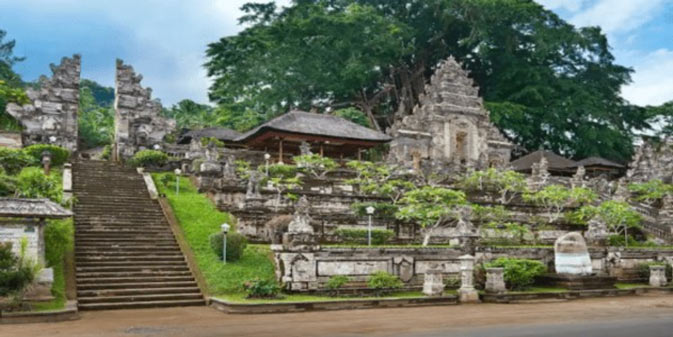Your Comprehensive Guide To Pura Sakenan
Nov 22, 2023 By Juliana Daniel
Advertisement
Sakenan Temple, locally known as Pura Dalem Sakenan, is a Hindu temple on the north-western shore of Serangan Island in southern Denpasar. The 10th-century temple offers a unique cultural highlight during the temple's Piodalan anniversary every 210 days when processions take place on foot or on traditional wooden boats.
As with any Bali temple visit, you must visit enter in proper temple attire – at least a simple sarong and sash around your waist. Try to walk around offerings placed on the ground instead of stepping over them. Try not to obstruct a procession in progress. Also, women should not enter temple grounds during their periods.
Have a look below to get more information on Pura Sakenan, Bali: how to reach, best time & tips:
An Overview of Pura Sakenan, Bali

Sakenan Temple is a principal temple in the southern part of Bali, situated on the northwest shore of Seangan. It is hardly 10 km south of Denpasar and easily reachable. The temple had its glory at the highest level when it was a centre of pilgrimage during the 210-day Piodalan temple anniversary, which was celebrated with processions to Serangan Island on foot or by the traditional boats made of wood. The renovations and adaptations changed the ways and structure of the temple and its location.
Location
JL. Banjar Pemalukan, Peguyangan, Kec. Denpasar Utara, Kota Denpasar, Bali 80115, Indonesia
Timings
24 hours open
History of the Temple
The temple was built in the tenth century by a famous priest who lived during that time, Mpu Kuturan, before the Majapahit Kingdom fell. The priest visited Bali with the aim of restructuring the socio-religious influences on the island.
How To Get There?

Sanur is located within Bali’s vicinity and is about 20 minutes taxi ride away from Ngurah Rai International Airport.
There are numerous metered taxis available around the island that are willing to transport you there.
The main road, Jalan Bypass Ngurah Rai, is the western boundary of Sanur, which makes it one of the easiest places to reach as there are several exit points with road signs from this main road into the center of Sanur.
If you’re coming from Kuta or Legian, spare about 30 minutes of driving time, about 45 minutes from Ubud or Seminyak, and about 15 minutes from Denpasar Downtown.
There are also various shuttle buses serving to/from Sanur from the north and south as well as Denpasar's Tegal terminal.
Direct bus transfers from Ubud, Kuta, Candidasa, Padang Bai, and Lovina are available through Perama Company, which is located in Jalan Hangtuah, Sanur.
Moreover, private shuttle buses are running straight from the major tourist centers of Bali to Sanur.
Best Time To Go Puran Sakenan
Bali lies between latitude 08 45S and longitude 115 10E, which places it firmly in the topics. Accordingly, average year-round temperatures are a balmy 26°C to 29°C (80°F -- 85°F), varying only with altitude. The average temperatures in the central mountains are 18°C to 24°C (64°F -- 75°F). Days are generally 12 hours long year-round.
Piodalan is also the best time to visit the temple to see the colourful festival and the rituals at the temple. It falls on every Kliwon Kuningan Saturday in the 210-day Pawukon calendar. There will be ritual dances performed by the locals during the festival.
4 Other Beautiful Temples In Bali With Scenic Backdrops

Today, we’ve got you covered with the 7 most scenic temples of Bali, which you should not afford to miss.
Pura Besakih
Situated on the grades of Bali’s biggest volcano — Mount Agung, otherwise called the Mother Temple and falsehoods a gathering of in excess of eighty temples that make up the nation’s biggest and most conspicuous temple with numerous stairs to move so as to completely explore the temples. Bekah’s vantage point in the mists implies that it offers stunning perspectives of the encompassing mountainous territory, rivers, streams, and beautiful rice paddies so keep your camera with you! If you want to make your Bali trip a memorable one, you have to visit this spectacular temple.
Taman Ayun Temple
Enhanced with widely varied flora and fauna, Taman Ayun Temple is effortlessly open and has a wide range of highlights — there are delightful hallowed places, each committed to an alternate Hindu god, and wellsprings to symbolize the nine principles of Hindu divine beings. Since you don’t need to move a long way from a city, climb tough, or sit tight for low tide, this sanctuary is one of the most straightforward ones to investigate. As you walk around the well-kept patios and past the mind-boggling Balinese-style structures, you discover a sentiment of quiet and tranquility that envelopes you.
Goa Gajah
Situated close to the Ubud and Close to the Elephant River and taking after the streams (Goa Gajah signifies “Elephant Cave”), Goa Gajah sanctuary is most notable for the scary appearances cut into the stone divider encompassing the passageway. In spite of the epithet, you won’t perceive any pachyderms here. The passageway to the give-in is an alleviation of some frightening, threatening-looking figures. It could likewise originate from the statue inside the give-in of the Hindu god Ganesha. In any case, the temple’s grounds are excellent and certainly justified regardless of a visit.
Pura Luhur Uluwatu
Situated on a rough bluff, this place is exceedingly respected. With its own staggering perspectives, visitors can think while watching the waves break against the base of the bluff or participate in the daily love exercises — these services incorporate droning, fire-moves, and significantly veiled performers. Uluwatu is roosted on a precipice 70 meters over the ocean. In Balinese, ulu signifies “top,” and watu signifies “shake” — the sanctuary over the stone. As per Balinese Hindus, the awesome energy of Brahma, Shiva, and Vishnu winds up here.
Conclusion
Pura Sakenan in Bali stands as a cultural gem, harmonizing spirituality and breathtaking scenery. Accessible by boat from Sanur Beach, the journey itself sets the tone for a memorable experience. To capture the temple's beauty and avoid crowds, the best time to visit is during the annual full moon celebration. Remember to dress modestly and be respectful of local customs.
Advertisement
-
![]() Destinations
DestinationsKodaikanal Drive: A Road Trip from Bangalore
Juliana Daniel Jan 07, 2024
-
![]() Guides
GuidesDiscovering the Serenity of Kerala's Best Backwaters
Juliana Daniel Feb 16, 2024
-
![]() Travel Tips
Travel TipsGuidelines You Should Be Familiar With While Visiting Raja's Seat, Coorg
Sean William Oct 05, 2023
-
![]() Travel Tips
Travel TipsThe Most Fun Things for Families to Do in The Austrian Mountains
Sean William Dec 07, 2023
-
![]() Destinations
DestinationsTop 8 Most Exciting Festivals and Events in India You Can Participate in 2024
Sean William Dec 26, 2023
-
![]() Attractions
AttractionsExplore the Most Charming Canal City In The World
Sean William Feb 24, 2024
-
![]() Guides
GuidesExploring the Philippines' Most Exotic Locations: A Comprehensive Guide
Sean William Feb 22, 2024
-
![]() Travel Tips
Travel TipsMaximizing Your Kochi Visit: Top Things to Do
Sean William Feb 20, 2024







